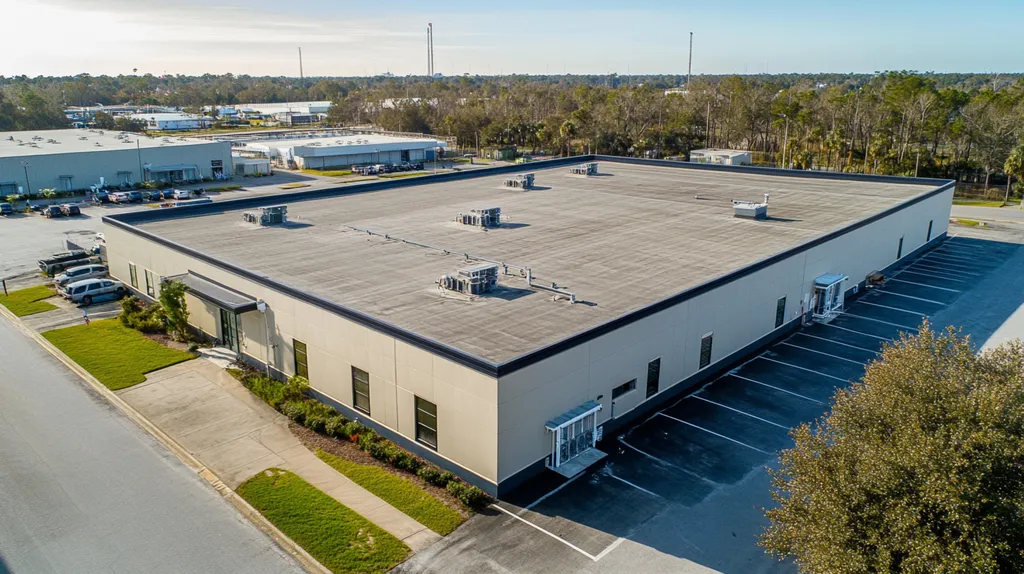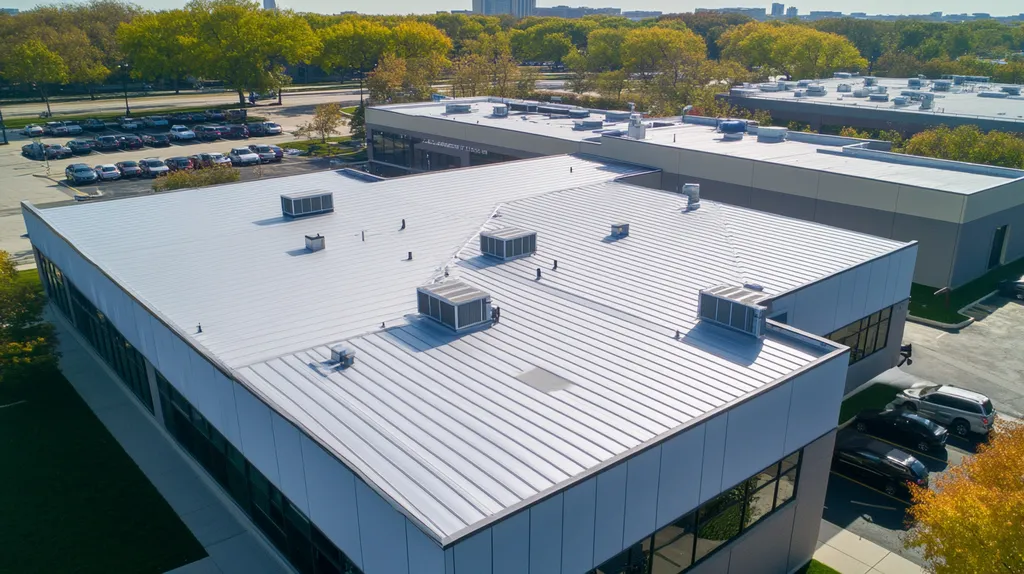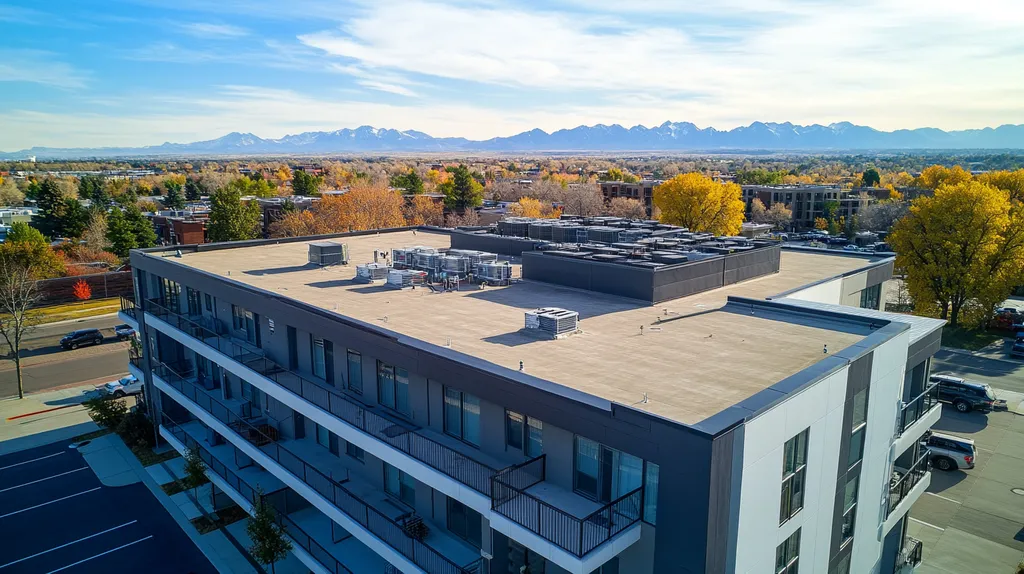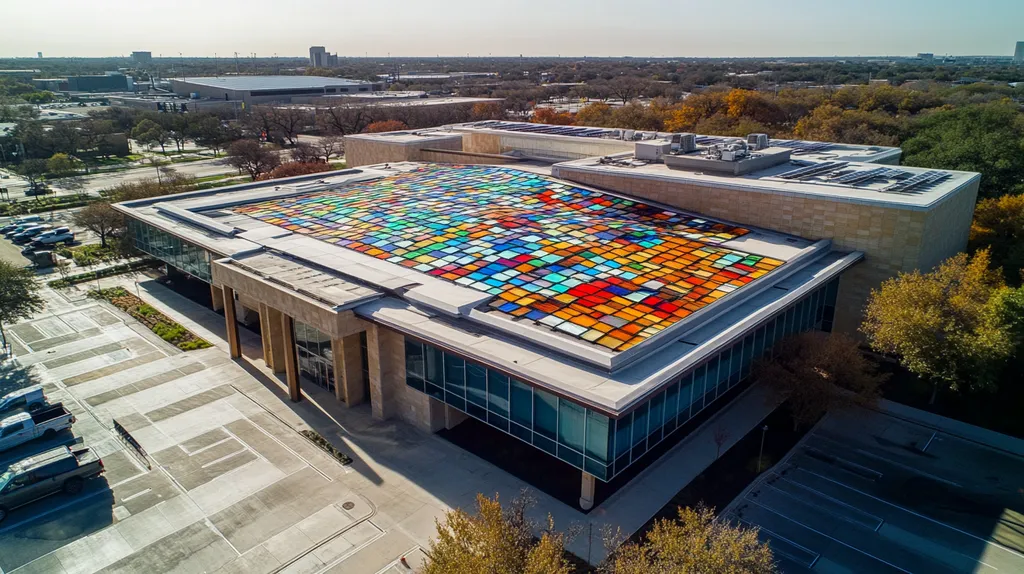Every year, billions of dollars in commercial roofing damage occurs due to mismatched coating solutions that fail to address specific climate challenges. Studies show that up to 70% of premature roof failures stem from using generic coatings unsuited for local weather conditions.
From scorching desert heat to corrosive coastal environments, each region demands a precisely engineered coating system to maximize protection and performance. The difference between choosing the right or wrong solution can cut a roof’s lifespan in half while doubling maintenance costs.
This comprehensive guide explores how climate-specific coating solutions protect commercial investments, breaking down complex technical concepts into practical, actionable insights for property owners and facility managers.
SECTION 1: THE BASICS EXPLAINED
Every year, commercial buildings face billions in damage from weather-related roofing failures. The right protective coating can mean the difference between a roof lasting 10 years versus 20+ years. Yet many property owners continue applying generic solutions that fail to account for their specific climate challenges, leading to premature deterioration and unnecessary expenses.
What It Is (In Plain Language)
A roof coating is essentially a protective shield – a specialized liquid that hardens into a seamless, waterproof barrier over your existing roof. Think of it as a customizable suit of armor that guards against your region’s specific weather challenges.
Different climates require different coating formulations. Hot regions benefit from reflective coatings that bounce away sunlight and heat. Coastal areas need salt-resistant barriers, while regions with frequent rain demand superior waterproofing properties.
Modern coating systems come in various types: acrylics for dry climates, silicones for wet environments, and polyurethanes for high-traffic areas. Each offers unique protective qualities designed for specific environmental conditions.
The thickness of these coatings typically ranges from 20 to 40 mils – about the thickness of a credit card. This seemingly thin layer provides remarkable protection when properly matched to local climate conditions.
Why It Matters (To Your Building)
Climate-appropriate roof coatings directly impact your bottom line through three key mechanisms: energy efficiency, maintenance costs, and roof longevity. The wrong choice in any of these areas can lead to significant financial consequences.
In warm climates, reflective coatings can reduce peak roof temperatures by up to 50°F, leading to substantial cooling cost savings. Cold-climate buildings benefit from coatings that resist thermal shock and prevent ice dam formation.
Proper coating selection also prevents common failure points like blistering, cracking, and delamination. These issues, if left unchecked, often lead to costly repairs or premature roof replacement.
Beyond immediate protection, climate-specific coatings help maintain building value. A well-protected roof means fewer structural issues, better energy performance, and higher property resale value.
How It Works
Climate-specific roof coatings function through advanced material science. The coating’s chemical composition creates a protective barrier that actively responds to environmental stresses while maintaining its protective properties.
In hot climates, specialized pigments and polymers reflect UV rays and heat. These components work together to maintain lower roof temperatures even during peak sunshine hours.
For wet environments, hydrophobic compounds create a water-resistant surface that channels moisture away while allowing the roof to breathe. This prevents both water infiltration and trapped moisture problems.
Installation requires careful surface preparation and proper application techniques. The coating must be applied at the correct thickness and under appropriate weather conditions to ensure proper curing and adhesion.
Regular inspections and maintenance help ensure these protective mechanisms continue functioning effectively throughout the coating’s service life. Most systems can last 10-20 years when properly matched to local conditions.
SECTION 2: PRACTICAL APPLICATIONS
Commercial roof coatings represent a critical investment in building protection and performance. Recent industry data shows that unprotected or improperly coated roofs can lead to energy losses of up to 30% and premature system failure. Understanding the practical applications of climate-specific coatings helps facility managers make informed decisions that impact both immediate operations and long-term building sustainability.
Common Uses & Examples
Climate and weather exposure significantly influence coating selection and performance across different regions. Temperature, humidity, wind, and precipitation patterns all play crucial roles in determining the most effective coating solution. (source: SmartSeal)
Hot, sunny climates demand reflective coatings with superior UV resistance. These specialized formulations can reduce roof surface temperatures by up to 60°F, dramatically improving building energy efficiency.
Coastal environments require coatings engineered to resist salt spray and high humidity. These maritime-grade solutions incorporate corrosion inhibitors and moisture barriers that protect underlying roofing materials.
Areas with extreme temperature fluctuations benefit from elastomeric coatings that maintain flexibility. These adaptive materials expand and contract without compromising their protective properties.
When You Need It Most
Timing roof coating applications involves understanding both environmental conditions and system wear patterns. Installation during moderate temperatures and low humidity ensures proper curing and maximum adhesion.
Buildings showing signs of coating degradation require immediate attention. Common indicators include surface chalking, membrane exposure, or decreased interior comfort despite normal HVAC operation.
Preventive coating applications should occur before severe weather seasons. This proactive approach helps protect against intense summer heat or harsh winter conditions.
Industrial facilities experiencing chemical exposure or excessive pollutants may need more frequent coating maintenance. These environmental stressors can accelerate coating breakdown and reduce protective properties.
Interactions With Other Systems
Roof coatings must work in harmony with existing building components to provide maximum protection. This includes compatibility with underlying membranes, insulation materials, and drainage systems.
Proper surface preparation ensures strong adhesion between coating layers and base materials. This critical step involves cleaning, repairs, and primer application where needed.
Edge details and penetrations require special attention during coating application. These vulnerable areas often experience the highest stress and must maintain watertight integrity.
Regular inspection of coated surfaces helps identify potential conflicts with other roofing components. Early detection of interaction issues prevents cascade failures that could compromise the entire system.
SECTION 3: KEY TERMINOLOGY DECODED
Understanding roofing terminology isn’t just about speaking the language – it’s about protecting your investment and ensuring optimal performance. Complex technical terms often create barriers between property owners and effective solutions, leading to costly misunderstandings and improper installations. Decoding these terms empowers decision-makers to make informed choices about climate-specific roof coatings that can dramatically impact building performance and longevity.
Essential Terms Explained
Silicone roof coatings represent a breakthrough in climate-specific protection, offering superior flexibility and weatherability across extreme temperature ranges from -40°F to 350°F. These advanced formulations create seamless barriers that prevent leaks while maintaining their protective properties in harsh environments. (source: Karnak Corp)
Elastomeric coatings describe materials that can stretch and return to their original shape, accommodating the natural expansion and contraction of roofing systems. This flexibility proves crucial in regions experiencing dramatic temperature swings.
Solar reflectance indicates how effectively a coating reflects sunlight, with higher values reducing heat absorption. Understanding this metric helps property owners select coatings that optimize energy efficiency in hot climates.
Waterproofing capacity measures a coating’s ability to prevent water infiltration while allowing the roof system to breathe. This balance becomes critical in areas with high rainfall or humidity levels.
Industry Jargon Translated
Dry mil thickness (DMT) refers to the coating thickness after curing, typically measured in mils (1/1000 inch). This measurement directly impacts coating performance and longevity, with most applications requiring 20-40 mils for optimal protection.
Substrate compatibility describes how well a coating bonds with the existing roof surface. Poor compatibility leads to adhesion failures, making this understanding crucial for successful application.
Cure time indicates how long a coating needs to reach full strength under specific temperature and humidity conditions. This factor affects both installation scheduling and initial roof vulnerability.
VOC content measures the amount of volatile organic compounds in coating materials. Lower VOC formulations offer environmental benefits while meeting increasingly strict regulations.
Measurement & Units Simplified
Coverage rates express how many square feet one gallon of coating will protect at a specific thickness. Understanding these rates prevents material shortages and ensures proper protection levels.
Tensile strength measures a coating’s resistance to breaking under stress, typically expressed in pounds per square inch (psi). Higher values indicate better durability in challenging conditions.
Permeability ratings, measured in perms, indicate how readily water vapor passes through the coating. This metric helps prevent moisture-related problems in humid climates.
Service life projections estimate coating longevity under specific conditions, usually ranging from 10-20 years. These estimates depend heavily on climate exposure and maintenance practices.
SECTION 4: DECISION FACTORS
Making informed decisions about commercial roof coatings has never been more critical. Recent industry data shows that improper coating selections lead to a 40% increase in emergency repairs and can double energy costs within the first five years. With climate patterns becoming more extreme, the stakes for choosing appropriate roofing solutions continue to rise. Understanding key decision factors helps property owners protect their investments while ensuring optimal building performance.
Cost Considerations
Initial coating investments typically range from $2 to $5 per square foot, varying by material type and application complexity. However, focusing solely on upfront costs often leads to expensive remediation later.
Premium silicone coatings offer superior protection against ponding water and UV rays, making them particularly cost-effective for harsh climates. These advanced materials maintain their protective properties in extreme temperatures from -40°F to 350°F, significantly reducing long-term maintenance needs. (source: Karnak Corporation)
Energy savings from climate-appropriate coatings can offset higher initial costs. Reflective coatings in hot climates often pay for themselves within 3-5 years through reduced cooling expenses.
Local building codes and insurance requirements may influence coating selection. Meeting these standards can prevent costly retrofits while potentially qualifying for premium reductions.
Performance Trade-offs
Different coating systems excel under specific conditions but may underperform in others. Understanding these trade-offs helps match solutions to local climate challenges.
High-performance coatings typically offer superior resistance to specific stressors. For instance, elastomeric products excel in areas with dramatic temperature swings, while acrylic coatings provide excellent UV protection in sunny regions.
Application requirements vary significantly between coating types. Some demand precise temperature and humidity conditions during installation, while others offer more flexible application windows.
Maintenance needs differ based on coating chemistry and environmental exposure. Premium solutions often require less frequent maintenance, though regular inspections remain essential for all systems.
Lifespan & Durability Factors
Climate exposure significantly impacts coating longevity. Systems rated for 20 years in moderate conditions may last only 10-12 years in extreme environments.
Surface preparation quality directly affects coating durability. Proper cleaning, repairs, and primer application can extend service life by 30-50%.
Regular maintenance protocols should match both coating type and local conditions. High-stress environments may require annual inspections and touch-ups to maintain protective properties.
Warranty terms often reflect realistic performance expectations. Premium coatings typically offer longer coverage periods and more comprehensive protection against specific environmental challenges.
SECTION 5: COMMON CHALLENGES
Commercial roof coating failures cost businesses billions annually in repairs, energy waste, and structural damage. Recent data shows that 70% of premature coating breakdowns stem from preventable issues like improper material selection and inadequate maintenance. Understanding and addressing these challenges proactively can dramatically extend roof life while protecting valuable assets underneath.
Frequent Problems & Solutions
SEBS rubber roof coating systems have emerged as a leading solution for extreme weather conditions, offering exceptional protection against UV radiation and corrosion. These ENERGY STAR-rated coatings can reduce roof surface temperatures by 50-60°F through superior solar reflectance, while their single-coat application reduces installation costs. (source: Inland Coatings)
Adhesion failure remains the most common coating issue, often resulting from poor surface preparation or incompatible materials. Proper cleaning, priming, and material selection can prevent most adhesion problems while extending coating life.
Water ponding creates persistent challenges, particularly on flat commercial roofs. Installing adequate drainage systems and maintaining proper slope helps prevent standing water that can degrade coating performance.
Chemical exposure from industrial processes or air pollution can accelerate coating breakdown. Regular cleaning protocols and choosing chemical-resistant formulations helps maintain protective properties in harsh environments.
Warning Signs To Watch For
Surface blistering indicates trapped moisture or air beneath the coating, requiring immediate attention. These blisters can rapidly expand, leading to widespread coating failure and water infiltration.
Chalking or excessive erosion signals UV degradation and loss of protective properties. This condition often appears first in areas with direct sun exposure or high traffic.
Cracking patterns reveal stress points where thermal cycling or structural movement compromises coating integrity. Documenting crack progression helps identify underlying issues requiring attention.
Color changes beyond normal weathering may indicate chemical contamination or material breakdown. Regular documentation of surface appearance helps track degradation rates and plan maintenance.
Preventative Approaches
Establishing comprehensive inspection protocols catches problems before they escalate. Monthly visual checks combined with detailed bi-annual assessments create an effective early warning system.
Creating detailed maintenance records helps track problem areas and evaluate coating performance. This data proves invaluable for planning repairs and future coating applications.
Training maintenance staff in proper cleaning techniques and basic troubleshooting improves response times. Quick identification of issues prevents minor problems from becoming major failures.
Developing relationships with qualified roofing contractors ensures access to expertise when needed. Regular professional assessments complement in-house maintenance efforts while validating warranty compliance.
SECTION 6: NEXT STEPS & RESOURCES
Every day, commercial buildings face increasing challenges from extreme weather patterns that test the limits of traditional roofing solutions. Without proper guidance, property owners risk investing in coating systems that fail to address their specific climate challenges, leading to premature failure and unnecessary expense. Understanding how to evaluate providers, navigate industry standards, and access ongoing education proves critical for protecting these valuable assets.
Questions To Ask Providers
Commercial roof coatings come in various formulations, each designed for specific environmental challenges and performance requirements. Understanding which coating type best matches your building’s needs requires asking targeted questions about material properties, application methods, and expected outcomes. (source: Unforgettable Coatings)
Request detailed explanations of how recommended solutions address your specific climate challenges. Providers should clearly articulate the benefits of different coating types, from acrylic’s reflective properties to silicone’s superior weatherability.
Discuss maintenance requirements and expected service life under local conditions. Quality providers offer comprehensive care guidelines and support services that help maximize coating performance.
Verify warranty coverage and response protocols for potential issues. Understanding these protections helps ensure long-term value and peace of mind.
Industry Standards & Guidelines
Key organizations like ASTM International and the National Roofing Contractors Association (NRCA) establish critical performance benchmarks for commercial roof coatings. These standards help ensure consistent quality and reliability across different applications.
Energy efficiency requirements continue evolving, with many jurisdictions now mandating specific reflectivity values for commercial roofs. Understanding these requirements prevents costly compliance issues later.
Building codes often specify minimum performance criteria for different climate zones. Working with providers who understand these requirements helps ensure proper material selection.
Environmental regulations increasingly impact coating choices, particularly regarding VOC content and chemical composition. Staying informed about these requirements protects against potential violations.
Further Learning Simplified
Professional organizations offer valuable educational resources designed specifically for property owners and facility managers. These materials help decode technical concepts while providing practical application guidance.
Industry publications regularly feature case studies highlighting successful coating applications in different climates. These real-world examples offer valuable insights for similar projects.
Manufacturer training programs provide detailed information about specific coating systems. Taking advantage of these resources helps ensure optimal material selection and application.
Online forums and industry networks facilitate knowledge sharing among property professionals. These communities often provide early warnings about emerging issues and innovative solutions.
The Bottom Line
With climate-related roofing damage costing businesses over $5 billion annually, selecting the right coating system has never been more critical for commercial property protection.
Modern coating technologies offer unprecedented protection against regional weather challenges, from desert heat to coastal salt exposure, yet studies show 70% of buildings still use mismatched solutions that fail prematurely.
The difference between optimal and inadequate coating selection can mean doubling a roof’s lifespan while cutting energy and maintenance costs by up to 40%.
As weather patterns become more extreme, property owners who invest in climate-specific coating solutions position themselves to protect their assets while contributing to more sustainable, resilient communities.
The future of commercial roofing depends on matching advanced coating technologies to local environmental demands – the time for informed action is now.
FREQUENTLY ASKED QUESTIONS
Q. What is a commercial roof coating?
A. A commercial roof coating is a protective liquid applied to roofs that hardens into a waterproof barrier. This coating customized for local climate challenges extends the lifespan of your roof, ultimately saving costs on maintenance and repairs.
Q. How can climate affect commercial roof coatings?
A. Climate directly influences coating performance and selection. Different conditions like temperature, humidity, and UV exposure determine which coating will effectively protect your roof against environmental stressors, making focused choices essential for longevity.
Q. What terms should I know about commercial roofs?
A. Familiarizing yourself with terms like ‘elastomeric coatings’ or ‘solar reflectance’ is crucial. Understanding these concepts helps ensure you select the most effective commercial roof coating tailored to your building’s specific needs and environmental challenges.
Q. How do I decide on a commercial roof coating?
A. When choosing a coating, consider factors like cost, performance, and environmental conditions. Prioritize long-term benefits over initial expenses, as the right choice can greatly influence your building’s energy efficiency and repair costs down the road.
Q. What are common challenges with commercial roof coatings?
A. Common challenges include adhesion failure, water ponding, and chemical exposure. Identifying these issues early through regular maintenance can prevent serious problems, ensuring the longevity of your investment and minimizing costly repairs.
Q. What questions should I ask roof coating providers?
A. Ask about the specific coating types suited for your climate and their benefits. Inquire about application methods, maintenance requirements, warranty coverage, and previous case studies related to similar projects to ensure a reliable choice.
Q. How can I prolong the life of my commercial roof?
A. Regular inspections, timely maintenance, and choosing the appropriate coating can significantly extend your roof’s lifespan. Stay proactive by addressing minor issues before they escalate, and ensure proper preparation during coating application for long-lasting protection.











